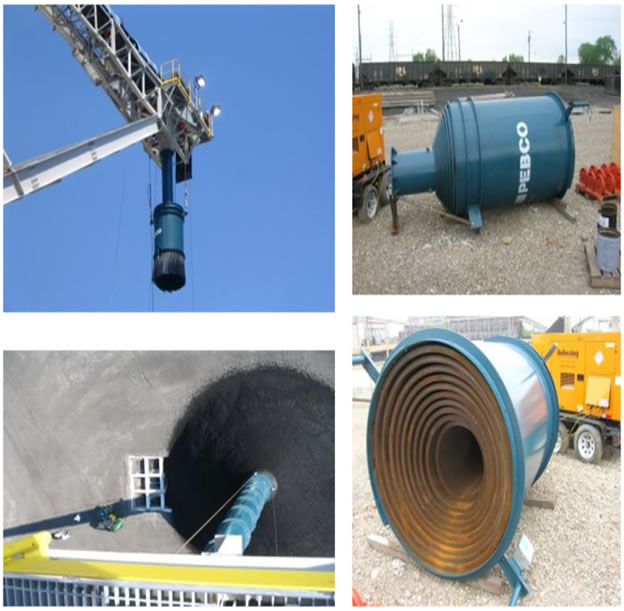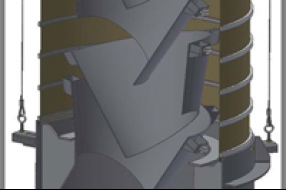We're Hiring
- Asst. Manager / Deputy Manager (Pithampur, Indore-M.P., India)
- Asst. Manager / Deputy Manager / Manager HR (Oragadam, Chennai)
- Technical Assistant / GET / Service Engineer (PAN India)
- GET / Sales Executive (PAN India)
Please send your resume to [email protected] or visit our Careers Page for more information.
Material Handling Systems
The Cascade Chute is a unique patented design, consisting of oppositely inclined cones, supported by straps and surrounded by an independent wind shroud.

What is a Cascade Chute
and How Does it Work?
The Cascade Chute is a unique patented design, consisting of oppositely inclined cones, supported by straps and surrounded by an independent wind shroud.
The cascade principle directs the material flow back and forth rather than allowing the material to fall directly through the chute. This flow pattern creates a mass flow profile and decreases product flow speeds.
The reduction in the product discharge velocity and the amount of induced air minimizes dusting at the discharge.
Cascade Chute
 Salient Features:
Salient Features:
- Gravity flow chute that reduces the free fall of material
- Reduces degradation of the product
- Reduces product segregation
- Environmental laws are tough and dust levels must be kept in control – no dust collection required
Primary Applications:
- Open stockpiling
- Barge loading
- Ship loading
Dust Free Loading 3000 TPH


Telescopic Chute
The Cascade Chute is a unique patented design, consisting of oppositely inclined cones, supported by straps and surrounded by an independent wind shroud.

What is a Telescopic Chute
and How Does it Work?
The Cascade Chute is a unique patented design, consisting of oppositely inclined cones, supported by straps and surrounded by an independent wind shroud.
The cascade principle directs the material flow back and forth rather than allowing the material to fall directly through the chute. This flow pattern creates a mass flow profile and decreases product flow speeds.
The reduction in the product discharge velocity and the amount of induced air minimizes dusting at the discharge.










